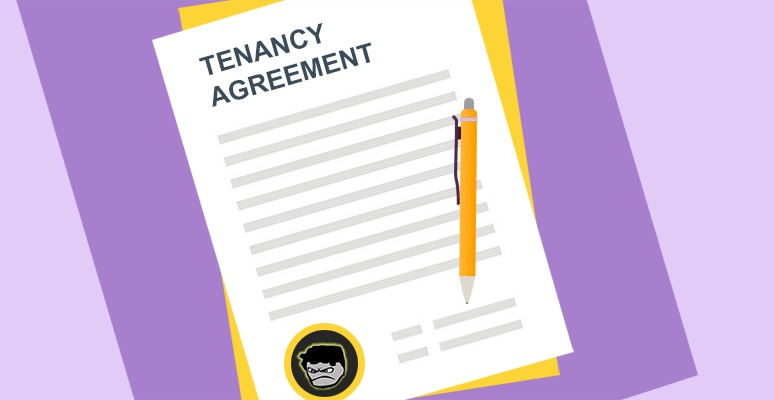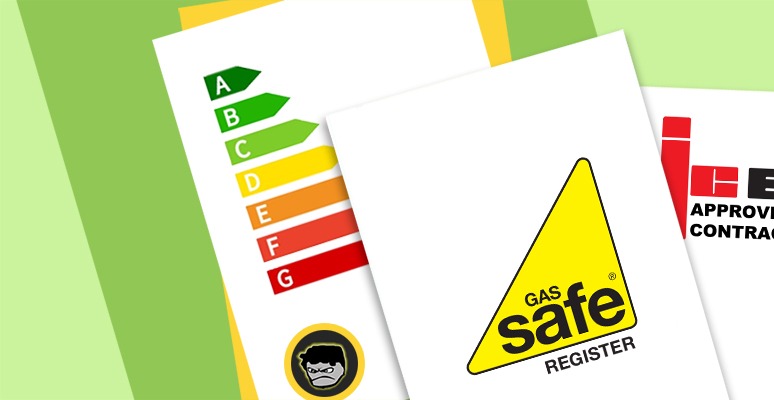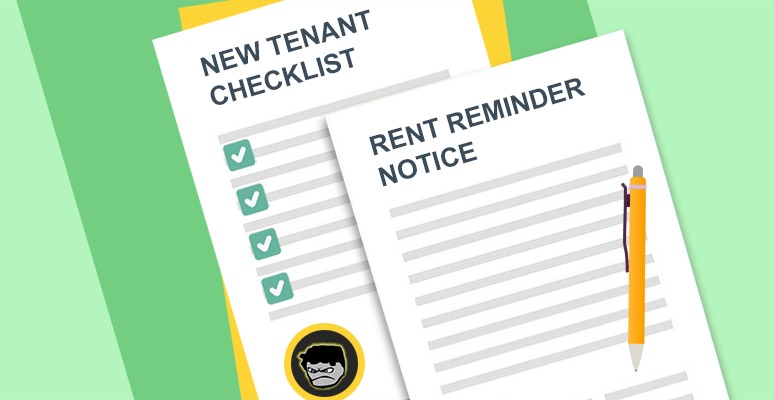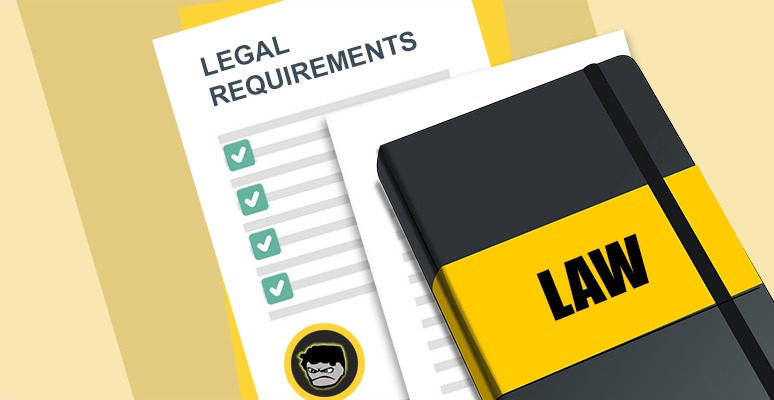
There’s a lot of common misconceptions about the Section 21 – Notice of Possession (also known as the “no fault eviction notice”), including what it is, when it can be used, and when it should be used, so hopefully I’ll be able to clear up a lot of the noise right here.
Please note, this is just a general overview which applies to Assured Shorthold Tenancies in England only. This post does not contain any legal advice.
Page contents:
- Quick Overview: Section 21 notice
- What is a Section 21 notice?
- Section 21 Vs Section 8 Notice
- In order for your Section 21 to be valid
- How and when to serve a Section 21
- How long does a Section 21 notice remains valid for?
- Who do I address the notice to?
- My tenant won’t leave even though I have served a Section 21 notice
- Access free legal advice!
Quick Overview: Section 21 notice
- A Section 21 notice is a legal notice to end an Assured Shorthold Tenancies at the end of the fixed term;
- the notice cannot be used to terminate a tenancy during the fixed period;
- landlords must normally provide tenants with at least 2 months notice before they can repossess the property;
- the notice should specify when the tenant should vacate the property by, and if they do not voluntarily leave by then, the landlord must apply to the court for a possession order;
- it should be served by the landlord (or agent) to the tenant(s);
- it is also known as a “no fault” eviction notice because a reason to serve notice is not required;
- In order to serve a valid Section 21 notice, landlords must follow proper procedures.
What is a Section 21 notice?
A Section 21 notice is a document that is served by the landlord (or agent) to a tenant in order to give advance notice of repossession (i.e. terminate the tenancy) of an Assured Shorthold Tenancy when they do not wish to extend or renew the tenancy at the end of the term.
Landlords do not need to give any specific grounds for repossession when using a Section 21 notice, and that’s because serving one doesn’t necessarily mean the tenant has done anything wrong, hence why it’s often referred to as a “no-fault” repossession notice.

In other words, “Mr/Ms Tenant, unfortunately I don’t wish to renew or extend the tenancy, so can you please kindly vacate the premises at the end of the term as per the tenancy agreement.”
Landlords have a legal right to repossess their property at the end of fixed or periodic term of a tenancy. However, for landlord’s to exercise this right they are required to follow the correct legal procedure, which includes serving a Section 21 notice (under Section 21 of the Housing Act 1988) to the tenant.
A common misconception is that a Section 21 notice is used to prematurely end a tenancy agreement and evict tenants, but it literally cannot be used for that purpose.
Serving a section 21 can only be used by landlords in two instances:
- Regain possession of a property at the end of the fixed or periodic term.
- Regain possession of a property with the use of a break clause (this is based on the assumption that a break clause exists in the tenancy agreement).
Section 21 Vs Section 8 Notice
Another common mistake people make is that they confuse Section 21 with Section 8 (and vice versa). While they can both be used by landlords to terminate a tenancy, they function differently from both a practical and legal standpoint, and can be used under different circumstances.
The key differences:
- Section 8 notice: this can be used to terminate a tenancy at any point only if the tenant has breached the terms of tenancy and there are grounds for eviction (e.g. fallen into rent arrears).
- Section 21 notice: this is used by the landlord without giving a specific reason for wanting possession. It can be issued during the fixed-term, but it cannot take effect until the fixed-term expires.
It’s important to note that both notices are completely different from one another. You can serve both at the same time (if necessary) and they won’t have any conflicting issues. You don’t need to cancel one before serving the other, they are totally separate mechanisms.
Now, before I move on, I’d be remiss if I didn’t mention that it’s often more effective (and easier) for landlords to serve a Section 21 instead of a Section 8 notice even when there has been a breach. That’s because landlords do not need to provide a reason to serve a section 21, so in the unfortunate event that a tenant ignores a possession notice and remains in the property, the landlord can get a court order without any problems. However, because a Section 8 notice relies on grounds for eviction, many of which are discretionary, the tenant can dispute it if they disagree with the allegation (or simply want to drag their heels), making it a potentially long, drawn out affair. It could end up being the case that the court rules in favour of the tenant.
So, for example, if your tenant has breached the terms of the tenancy 10 months into a 12 month fixed term tenancy, often the easier and cleaner solution is to serve a Section 21 notice because “no fault” possession notice cannot be disputed and therefore doesn’t need to be justified.
However, I wouldn’t necessarily say that’s always the best approach, as every case is unique and carries its own set of circumstances which need to be taken into consideration.
A lot of people (that don’t understand the industry or the legal system) think landlords use Section 21 for frivolous reasons, which is why there’s a call for banning them. But that’s so far from reality; most landlords only want reliable and long-term tenants, and only use Section 21 notices when tenants have breached terms of the tenancy and because it’s a much cleaner and less complicated process than Section 8. So the data and perception on Section 21 notices is very skewed.
For further reading, here’s a more detailed blog on Section 21 vs Section 8.
In order for your Section 21 to be valid…
It’s crucial to serve a valid Section 21 notice in the event the tenant refuses to vacate, in which case you may need to take legal action. In those circumstances, the law will only grant you possession if the correct procedures have been taken, which includes serving a valid section 21.
In order for your Section 21 to be valid (i.e. enforceable by law), the following must be true…
- You must use the prescribed Section 21 FORM 6A to issue a copy of the notice to each tenant, and it must be completed correctly, including the tenant’s full name, property address, and the correct repossession date.
You can download Section 21 FORM 6A directly from the Government website.
- Secured tenant’s deposit into a tenancy deposit scheme within 30 days of receiving it (if a deposit was taken).
- Served the deposit scheme’s prescribed information within 30 days of receiving the deposit.
- Supplied the tenant with copy of an Energy Performance Certificate (EPC) before the tenancy begins, ideally during the viewing.
- Supplied tenant with a valid Gas Safety Certificate before the section 21 notice is served. On a side note, it was once believed that in order for a Section 21 to be valid, the gas safety certificate needed to be served before the tenancy began, but that has been said to be unnecessary in the court of law, Trecarrell House Ltd v Rouncefield [2020].
- Supplied tenant with an up-to-date copy of the “How to rent” guide, which can find out more about and download from here.
- The property must be licensed where the law requires either a mandatory HMO or in an area that is subject to Selective or Additional licensing. If you are unsure if you are subject to licensing, I recommend contacting your local council.
- The notice will not be valid if there’s evidence of ‘retaliatory eviction’, which means…
- the tenant has made a written complaint to the landlord about the condition of the property before the notice was served; and
- the landlord has not provided an adequate written response (e.g. clarify what actions you are going to take to resolve the problem and to what timescale) within 14 days; and
- the tenant has then complained to the relevant local authority about the problem, who then serve an “Improvement Notice.”
For tenancies in England that started on or after 1st June 2019
On 1st June 2019 the “Tenant Fees Act 2019” came into force, which is a legislation that focuses on banning and restricting letting agents and private landlords (in England) from charging tenants with certain fees, which includes charging referencing fees and oversized deposits.
In short, if your tenancy started on or after 1st of June 2019, you are only permitted to charge tenants the following “Permitted Payments” as set out by the Act:
- Rent
- Tenancy deposit (capped at five weeks’ rent if rent is less than £50k per year, or six weeks’ rent where the total annual rent is £50k or above).
- Holding deposit (capped at one week’ rent)
- Payments to change the tenancy when requested by the tenant (capped at £50).
- Payments associated with early termination of the tenancy, when requested by the tenant.
- Payments in respect of utilities, communication services, TV licence and council tax.
- A default fee for late payment of rent and replacement of a lost key/security device, where required under a tenancy agreement.
If you have charged your tenants with anything other than what is listed above, such as ‘referencing fees’, ‘inventory costs’, or costs associated with ‘professional end of tenancy cleaning’ services, then you’ve most likely unlawfully charged your tenants with a “Prohibited Payment”, in which case you cannot evict a tenant using the section 21 eviction procedure until you have repaid any unlawfully charged fees or returned an unlawfully retained holding deposit. For more details, refer to the “Tenant Fees Act 2019” blog post.
I’m not going to beat around the bush, so just to clarify: if you have not met the requirements to serve a valid Section 21 notice, then you might have a very difficult time trying to repossess your property if your tenants are reluctant to leave, especially if you don’t have any legitimate grounds for eviction. If you are in that predicament, I would highly recommend speaking to a specialist tenant eviction company or seeking legal advice.
How and when to serve a Section 21 (i.e. how much notice must I give my tenants)?
Generally speaking, in most cases, giving two clear months’ notice should be sufficient, particularly if you collect on a weekly or monthly basis (which is 99% of the time the case). But here are the specifics…
If you are serving a Section FORM 6A during a fixed term
Unlike the old Section 21 notices, there is no need for landlords to end their notice on a period of a tenancy (e.g. if the tenancy started on the 15th July 2015, we won’t need to end it on the 14th of July 2015). They just need to comply with the correct time period.
Minimum of two months notice is required and you cannot serve the notice within the first 4 months of the start date of the fixed term (this 4 month rule does not apply to tenancy renewals or tenancies that roll onto periodic tenancies; the first 4 months are taken as the first 4 months of the original tenancy).
If you serve a Section 21 FORM 6A during the fixed term and then let the tenancy roll over into a Periodic Tenancy, the section 21 will no longer be valid, and you will need to serve another notice.
If you are serving a Section FORM 6A when the tenancy has become a Statutory Periodic
The minimum 2 months’ notice period remains the same as long as the periodic period runs weekly or monthly (that’s based on when rent is paid). Where a tenancy period runs quarterly or biannually, landlords will still need to give an appropriate matching period of notice (e.g. 3 months’ notice for quarterly tenancy periods, 6 months’ notice for biannual and above).
How long does a Section 21 notice remain valid for?
If the Section 21 was served in the fixed term, you have a “use by date” of 6 months. After that, you will need to serve another notice (which will expire again after 6 months).
If the tenancy has become a Statutory Periodic and the rolling contract is on a weekly or monthly basis, it will also expire after 6 months. However, if the periodic tenancy requires more than two months’ notice (e.g. if the rolling contract runs quarterly), possession proceedings will need to be started within 4 months of expiry of the notice, otherwise a notice will need to be re-served.
Who do I address the notice to?
All the tenants must be named in the notice and the names of the parties and the address should match those in the tenancy agreement. As a precautionary measure, serve each individual tenant with a separate notice.
Always keep a copy of the notice served and of any covering letter.
My tenant won’t leave even though I have served a Section 21 notice
If you have served notice and your tenant has failed to vacate on the date specified and also refuses to vacate, you can apply for an Accelerated Possession Procedure (assuming your section 21 notice was properly served).
This is the quickest method for landlords to gain possession of their property. The procedure is called accelerated because in most cases the judge makes the order based on the paperwork, without the need for a court hearing.
As per the GOV eviction guidelines, landlords can only do this if:
- you have an assured shorthold tenancy or a statutory periodic tenancy
- you have a written tenancy agreement
- they’ve given you the required written notice in the right form
- they have not asked you to leave before the end of a fixed-term tenancy
If you use the procedure, you can only claim possession and your costs of making the application. However, you cannot, for example, include other costs like rent arrears (landlords will need to recover other costs via separate procedures).
The court will normally make its decision by looking at the documents (‘written evidence’) which the landlord and tenant provide. Because the application will be dealt with in this way, all written evidence must be provided so the judge can make a decision.
Landlords can apply to start a Accelerated Possession Procedure from the GOV website by completing a form and sending it to the nearest court that deals with housing possession.
If you don’t have a written tenancy agreement…
Since an Accelerated Possession Procedure is only available to landlords with a written tenancy agreement, you will need to use another approach if you’re in this position.
Unfortunately, it’s not all that unusual for landlords and tenants to find themselves without a written tenancy agreement, whether it be due to one party not signing the original contract, or because all existing copies of the agreement have been misplaced over time.
Needless to say, not having a written agreement can make this process more difficult, but fortunately not impossible!
When a tenant moves into a rented property and begins rent payments, a tenancy is created with or without a written contract!
If a S21 notice has been issued and the tenant hasn’t vacated (or, if one hasn’t been issued at all), the option of serving a Section 8 notice is available. However, unlike with a Section 21 notice, landlords must provide a ground(s) for eviction when serving a Section 8 notice.
If a Section 8 notice is issued and the tenant still refuses to vacate, a landlord will need to apply to the courts for a possession order.
Access free legal advice!
Before taking any action – but especially if you don’t have a written tenancy agreement – I can only recommend seeking professional advice from a qualified eviction specialist to verify your position.
LegalforLandlords, a UK professional eviction company, currently provide Property Investment Project readers free legal advice (no obligations) and special discounted rates if you choose to use any of their premium services.
Contact them and reference the code PIPLANDLORD for free legal advice on tenant evictions.
| Landlord Legal Service | Rating | Price From | Notes | |
|---|---|---|---|---|
Landlord Legal Service | Rating TrustPilot Reviews | Price Free | Notes
*Make sure you quote exclusive promo code to qualify for free advice and special rates: PIPLANDLORD | Visit website *Call for Free Advice on: 0333 240 8255 *Email Support *Book FREE Case Review |
Disclaimer: I'm just a landlord blogger; I'm 100% not qualified to give legal or financial advice. I'm a doofus. Any information I share is my unqualified opinion, and should never be construed as professional legal or financial advice. You should definitely get advice from a qualified professional for any legal or financial matters. For more information, please read my full disclaimer.
Any documents you download from this website are just examples of its kind and should be checked by a professional. I give no warranties or representations concerning the documents, and accept no liability in relation to the use of the documents.


 Landlord Products / Services
Landlord Products / Services































Hi I issued my tenant with a section 21 which expires next week she is refusing to leave on instruction by the council, however my living situation has changed and I have to move into my own property with my 3 children, she is still refusing to leave but I'm moving in regardless of if she's there or not, I won't be changing the locks, what is the worst that can happen to me?